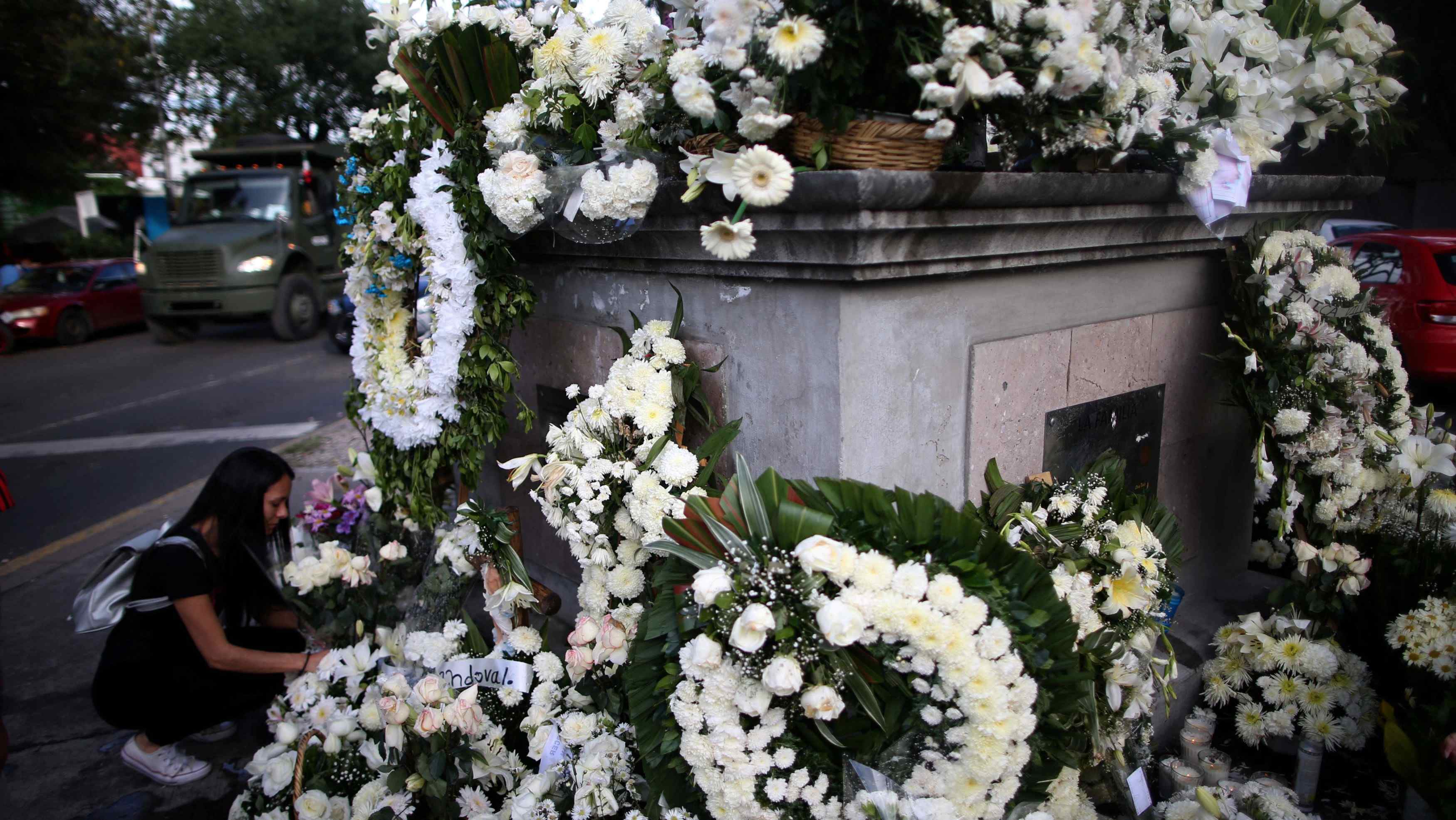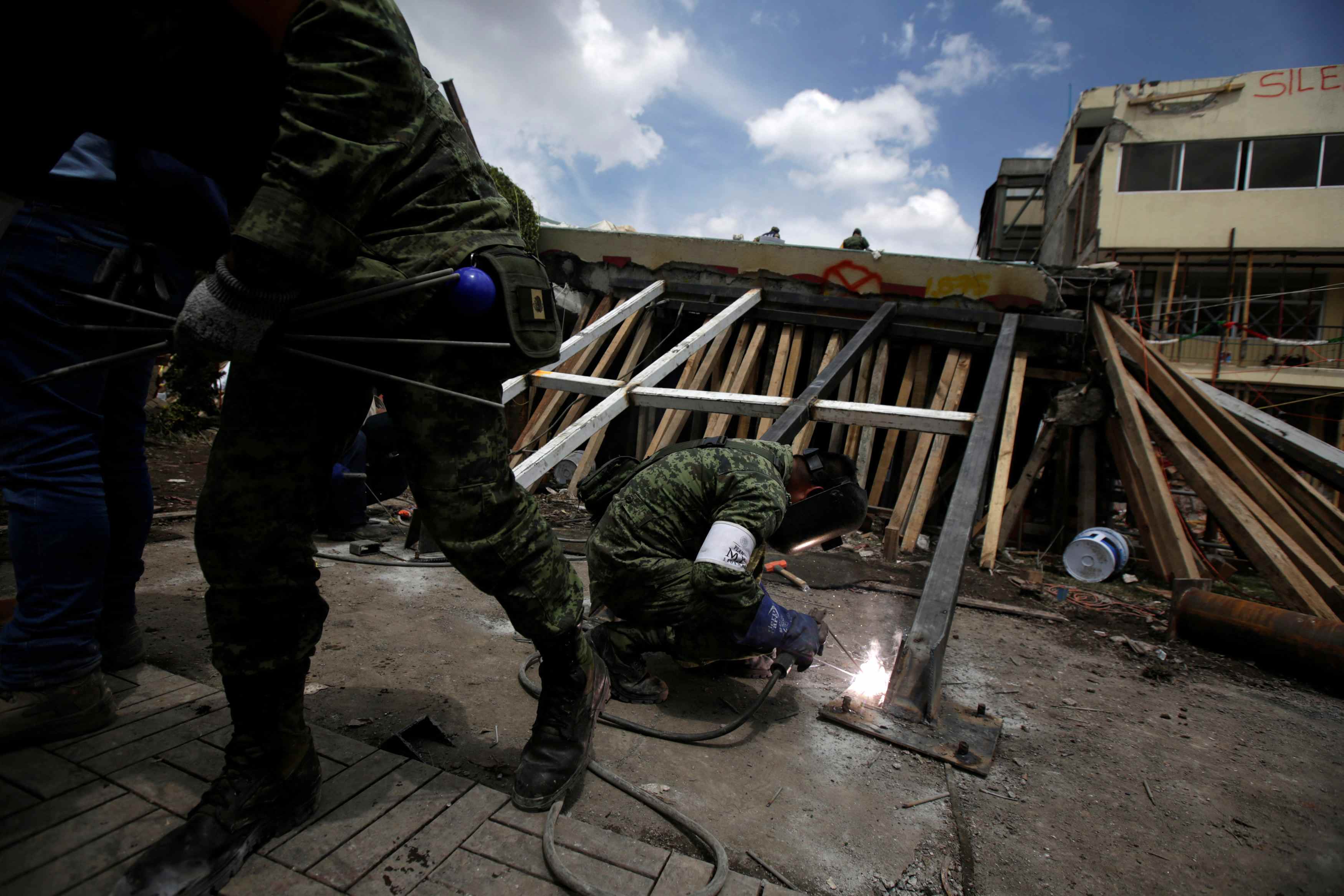
World
22:11, 27-Sep-2017
Mexico's mass grave: Poorly designed buildings
Alok Gupta

On September 19, a major 7.1-magnitude earthquake rattled Mexico killing more than 320 people, including 25 school children, at Enrique Rebsamen School. The country found a similar mass grave in a collapsed building in 1985.
Mayor of Mexico City, Miguel Angel Mancera, in a media briefing said Tuesday's earthquake collapsed 44 buildings and damaged another 5,000.
On the same date in 1985, a quake of 8.1 magnitude, nearly 30 times stronger than Tuesday's, struck Mexico. It killed close to 10,000 people, flattened 30,000 buildings and damaged 68,000 more.
‘Building’ a death trap
In the recent earthquake, private Enrique Rebsamen School became a mass grave, with 25 children killed. In 1985, Nuevo Leon, a housing complex, suffered a similar fate, having almost all of its 200 residents killed.
The disaster of Nuevo Leon led to a strong solidarity wave with hundreds of volunteers pouring in to find the survivors from the rubble. Nuevo Leon building was a part of Tlatelolco complex that housed more than 80,000 residents. Ironically, Mexican authorities had promptly repaired the building in 1982 after few damages were noticed.

Members of a rescue team search for students amidst the rubble of a collapsed
building of the Enrique Rebsamen school after an earthquake, in Mexico City,
Mexico September 22, 2017. /REUTERS/Jose Luis GonzalezInput
Members of a rescue team search for students amidst the rubble of a collapsed building of the Enrique Rebsamen school after an earthquake, in Mexico City, Mexico September 22, 2017. /REUTERS/Jose Luis GonzalezInput
Similar solidarity and anger are brewing over Enrique Rebsamen School collapse after reports trickled in that the school had failed to meet the safety standards enforced by the Mexican government post-1985 earthquake.
Disaster Prone
The deep soft soil deposits, left from an ancient lake in the eastern part of Mexico City, has made the city very much vulnerable to strong earthquakes.
After facing series of quakes, the Mexican government issued the Mexico City Building Code (MCBC) 2004 that focuses strongly on educational institutes in an effort to prevent them from becoming death traps during earthquakes.
The code was enforced after studying the vulnerability of educational buildings to the earthquakes.
The Earthquakes and Educational Infrastructure Policy in Mexico figures reveal that in 1999, an earthquake shook 870 school buildings in the state of Puebla and another 486 buildings in the state of Oaxaca; 2,000 classrooms and 56,000 students were affected. In 2003, an earthquake in Colima damaged an estimated 387 schools and 94 university buildings in the Autonomous University of Colima.
Where is the gap?
According to Professor Behzad Fatahi, Geotechnical and Earthquake Engineering University of Technology Sydney (UTS), Mexican authorities have improved the design and construction standards and practices significantly and adopted a comprehensive reform plan to make the city more earthquake resistant, which has been rather successful.
"However, beyond the city center, major tourist destinations and business hubs of the city, it seems that the required strict design and construction controls are not enforced carefully, and retrofit of existing buildings have not been done diligently," he told CGTN.

Damaged houses are seen in Joquicingo, Mexico on September 21, 2017 following a
strong earthquake two days ago. Time pressed on Mexico on Thursday as rescuers
looking for survivors picked through the rubble of buildings felled by a
powerful earthquake two days earlier, with hopes fading as the hours rolled by.
/ AFP / MARIO VAZQUEZ
Damaged houses are seen in Joquicingo, Mexico on September 21, 2017 following a strong earthquake two days ago. Time pressed on Mexico on Thursday as rescuers looking for survivors picked through the rubble of buildings felled by a powerful earthquake two days earlier, with hopes fading as the hours rolled by. / AFP / MARIO VAZQUEZ
"This two-story school is also located in the soft lake bed zone of Mexico City that is more susceptible to earthquakes," Behzad added.
Corruption and Inspection
Claudia Sheinbaum, mayor of Tlalpan district where the school is located, told Reuters that her office has been unable to find documentation to assess its construction and structural history (of the school). She blamed problems, including corruption, on a predecessor administration.
"When we came into office, there were many files missing," said Sheinbaum. But she had no proof that corruption had anything to do with the collapse.
However, in 2016, a detailed report titled "Evaluation of building code compliance in Mexico City: Mid-rise dwellings" reveals that a significant number of new buildings in Mexico City do not have a reliable record of technical information. Therefore, it is difficult to reanalyze buildings to assess their earthquake resistant performance.

SITEMAP
Copyright © 2018 CGTN. Beijing ICP prepared NO.16065310-3
Copyright © 2018 CGTN. Beijing ICP prepared NO.16065310-3